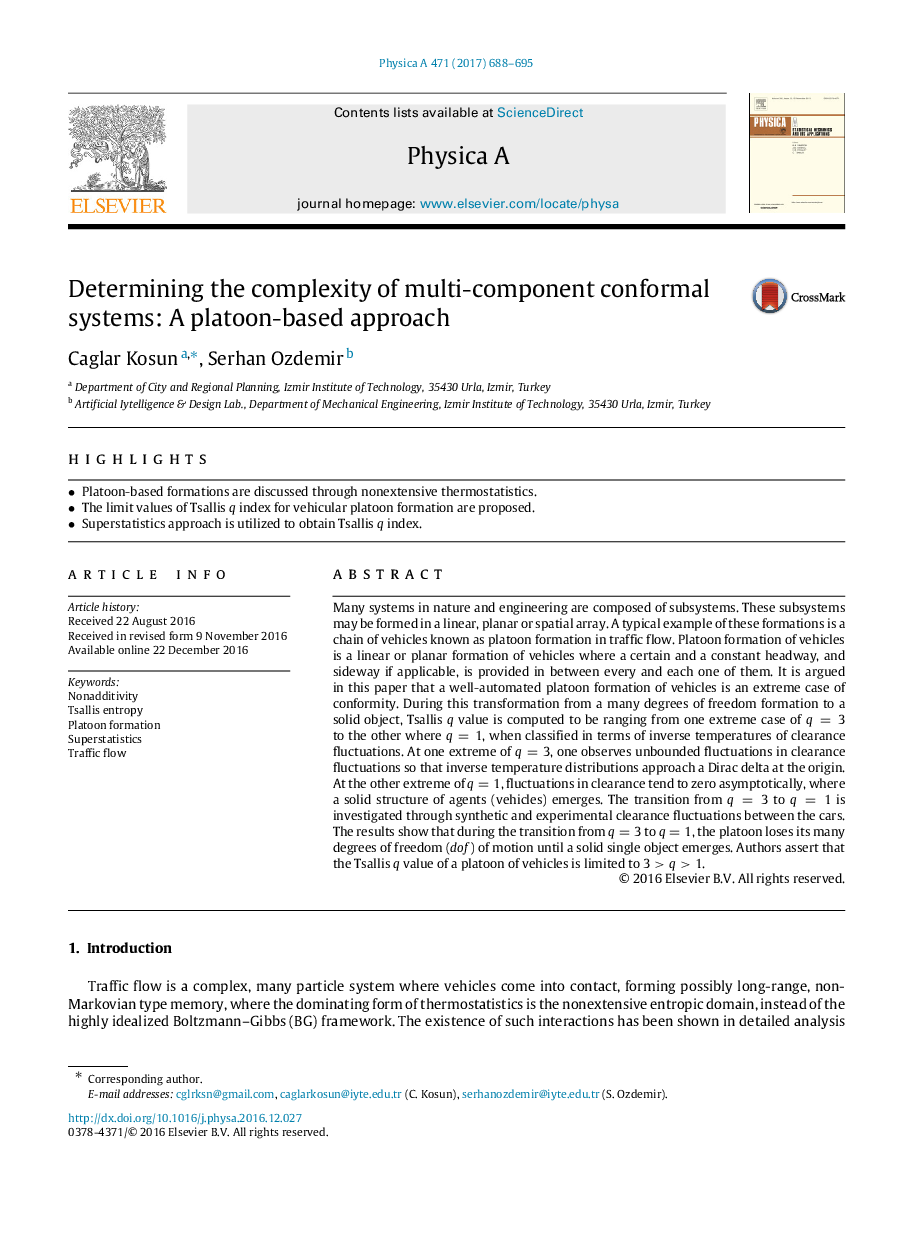| Article ID | Journal | Published Year | Pages | File Type |
|---|---|---|---|---|
| 5102949 | Physica A: Statistical Mechanics and its Applications | 2017 | 8 Pages |
Abstract
Many systems in nature and engineering are composed of subsystems. These subsystems may be formed in a linear, planar or spatial array. A typical example of these formations is a chain of vehicles known as platoon formation in traffic flow. Platoon formation of vehicles is a linear or planar formation of vehicles where a certain and a constant headway, and sideway if applicable, is provided in between every and each one of them. It is argued in this paper that a well-automated platoon formation of vehicles is an extreme case of conformity. During this transformation from a many degrees of freedom formation to a solid object, Tsallis q value is computed to be ranging from one extreme case of q=3 to the other where q=1, when classified in terms of inverse temperatures of clearance fluctuations. At one extreme of q=3, one observes unbounded fluctuations in clearance fluctuations so that inverse temperature distributions approach a Dirac delta at the origin. At the other extreme of q=1, fluctuations in clearance tend to zero asymptotically, where a solid structure of agents (vehicles) emerges. The transition from q=3 to q=1 is investigated through synthetic and experimental clearance fluctuations between the cars. The results show that during the transition from q=3 to q=1, the platoon loses its many degrees of freedom (dof) of motion until a solid single object emerges. Authors assert that the Tsallis q value of a platoon of vehicles is limited to 3>q>1.
Related Topics
Physical Sciences and Engineering
Mathematics
Mathematical Physics
Authors
Caglar Kosun, Serhan Ozdemir,
